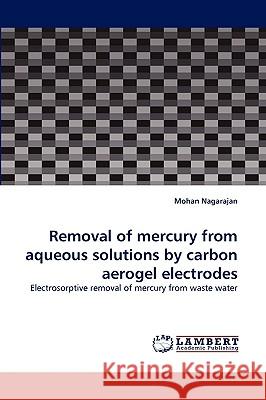Removal of Mercury from Aqueous Solutions by Carbon Aerogel Electrodes » książka
Removal of Mercury from Aqueous Solutions by Carbon Aerogel Electrodes
ISBN-13: 9783838319544 / Angielski / Miękka / 2010 / 64 str.
The present work reviews and reports recent works using high specific area carbon as an electrode material for electrosorptive removal of metal ion from the waste-water. These aspects of high-area carbon electrode behaviour arise from properties of the interphasial double-layer at which electrosorption and charge accommodation can take place, with the latter observably influencing the former. For simple aromatic heterocyclic compounds, such carbon material exhibits high effectiveness for electrosorptive removal and, importantly, major changes of extents of sorption with applied potential or current, and high specific area carbon cloth electrodes exhibit large capacitance density enabling them to be used as Supercapacitor electrodes. In the present study carbon aerogel electrodes was developed to treat mercury-contaminated waters.
The present work reviews and reports recent works using high specific area carbon as an electrode material for electrosorptive removal of metal ion from the waste-water. These aspects of high-area carbon electrode behaviour arise from properties of the interphasial double-layer at which electrosorption and charge accommodation can take place, with the latter observably influencing the former. For simple aromatic heterocyclic compounds, such carbon material exhibits high effectiveness for electrosorptive removal and, importantly, major changes of extents of sorption with applied potential or current, and high specific area carbon cloth electrodes exhibit large capacitance density enabling them to be used as Supercapacitor electrodes. In the present study carbon aerogel electrodes was developed to treat mercury-contaminated waters.











